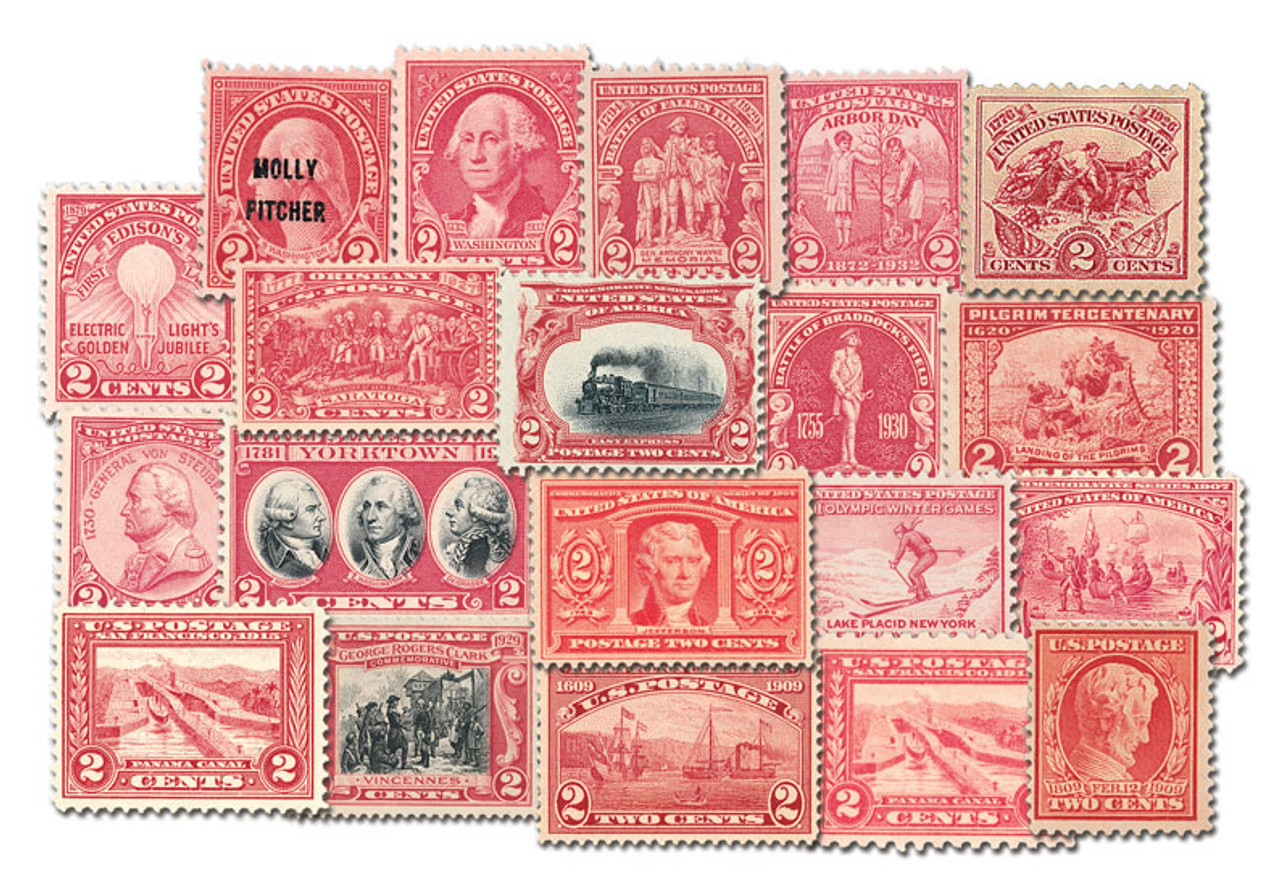
Get an Instant Collection of U.S. "2¢ Reds" Now
This is your chance to get 40 "2¢ Red" commemorative stamps issued by the United States from 1901-1932 in one easy, money-saving order.
The US commemorative stamps from the 1901 Pan-American issue to the 1932 Arbor Day issue represent a glorious period in philatelic history. Many beautiful and noteworthy co... more
Get an Instant Collection of U.S. "2¢ Reds" Now
This is your chance to get 40 "2¢ Red" commemorative stamps issued by the United States from 1901-1932 in one easy, money-saving order.
The US commemorative stamps from the 1901 Pan-American issue to the 1932 Arbor Day issue represent a glorious period in philatelic history. Many beautiful and noteworthy commemoratives were produced in these years – and the special issues reached new heights in design, color, detailed engraving, and subject significance.
The red 2¢ commemoratives are the most popular and widely collected stamps of these issues since 2¢ was the first-class letter rate throughout the period (except for a 20-month emergency interval during World War I).
And now, Mystic is able to offer you 40 2¢ commemoratives from 1901-1932 – the so-called "2¢ Reds." These collector-favorites are available in your choice of mint or used conditions. You'll find such well-known stamps as the 1913-15 Panama-Pacific Exposition issue and such little-known (but fascinating) stamps as the 1929 Battle of Fallen Timbers issue.
Take this opportunity to add the popular "2¢ Reds" to your collection today.
Order Now and You'll Receive:
US #295
US #324
US #329
US #367
US #368
US #370
US #371
US #372
US #373
US #398
US #402
US #549
US #615
US #618
US #620
US #627
US #629
US #643
US #644
US #645
US #646
US #647
US #649
US #651
US #654
US #655
US #656
US #657
US #680
US #681
US #682
US #683
US #688
US #689
US #690
US #702
US #703
US #707
US #716
US #717















